Unveiling the Beauty: Top Destinations to Explore in Sikkim
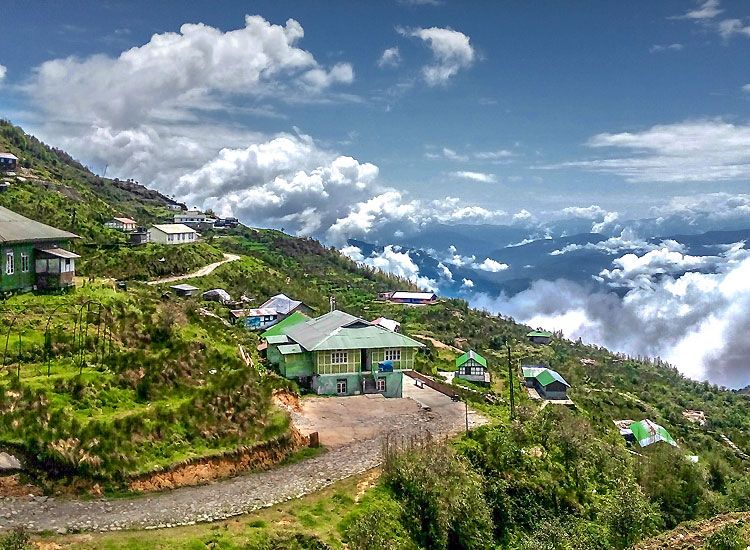
Nestled in the northeastern region of India, Sikkim is a paradise with breathtaking views of the majestic Himalayas. You are missing out on something truly lovely if you haven’t considered discovering the beauty of this amazing state. With its captivating grasslands, snow-capped and sky-piercing Himalayas, and the captivating attraction of its vibrant culture, Sikkim is like wonders in a small package.
If you want to know how to reach Sikkim from any location in India, you can travel by car, train, or air to get to Sikkim. Despite being landlocked by its sister states in the northeast, Sikkim’s increased connectivity with the rest of the nation has drawn a large number of tourists there each year. While this place is nice, Sikkim’s people are even nicer. Here are some of the best places to visit in Sikkim:
Top Places To Visit in Sikkim
1. The lake Tsomgo
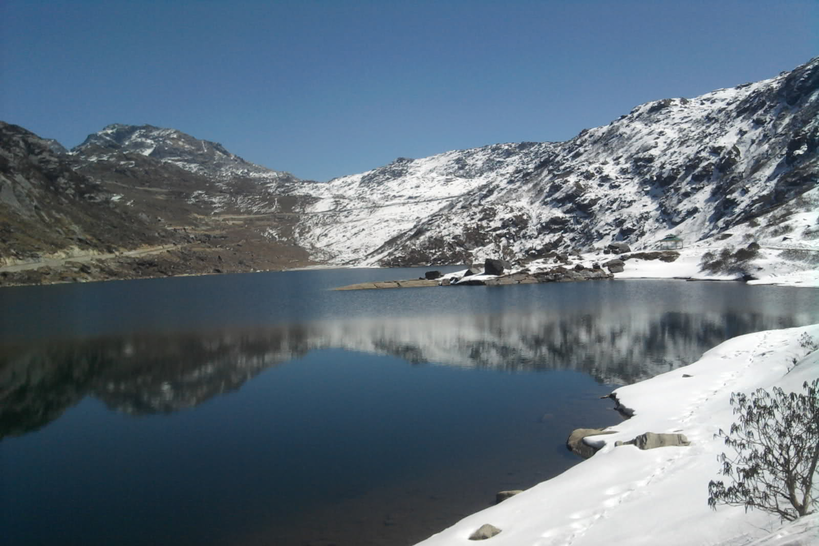
One of the best places to visit in Sikkim is the Tsomgo Lake, also known as Changu Lake. It is a glacier-formed body of water. One of the main tourist destinations in Sikkim is the Tsomgo Lake, which is situated at an elevation of 12,310 feet. The lake can be found 38 km from Gangtok on the Nathula Pass route. Known for its untouched beauty, this lake is among the highest in India. You will always treasure the memory of the surrounding snow-covered hills reflecting on Tsomgo Lake. The lake has an egg-like shape and is roughly one kilometer long. Winter is the best time to visit both Gangtok and Tsogmo Lake.
2. Kanchenjunga Base Camp
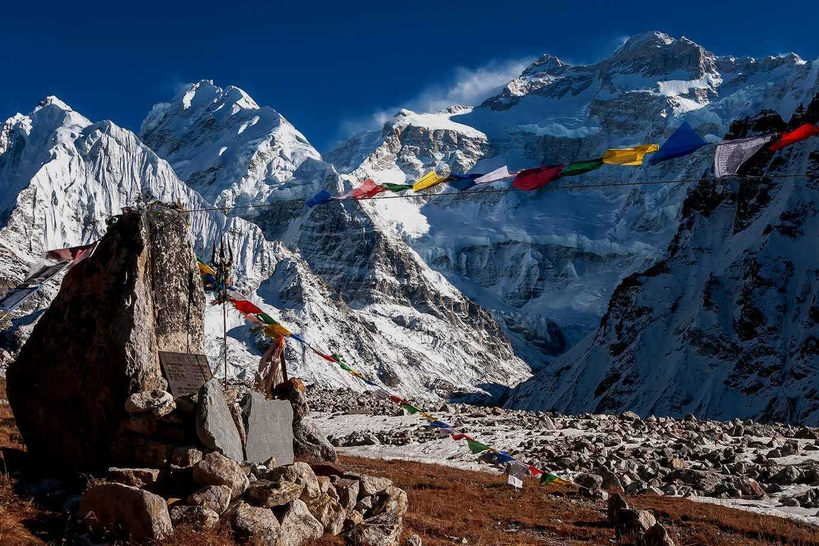
At nearly 14,000 feet above sea level, the Kanchenjunga Base Camp is one of the best activities in Sikkim and is haven for adventure seekers and one of the top tourist destinations in Sikkim. Views of the Kanchenjunga range, which together make up one of the most stunning sections of the Himalayas, are abundant from the base camp and are among the best places to visit in Sikkim. This location is worth a once-in-a-lifetime visit because the real thrill for visitors is getting up close and personal with the world’s third-highest mountain.
3. Nathula Pass
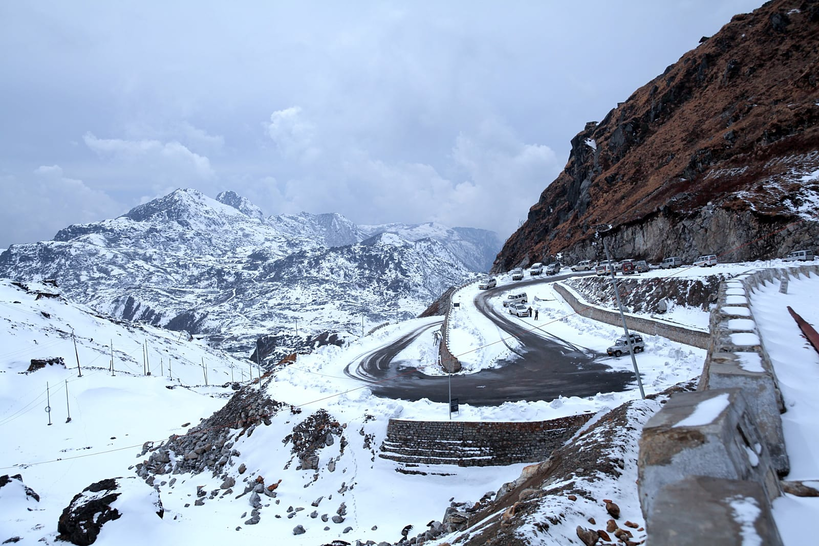
Trekking enthusiasts should go to Nathula Pass, which is at a height of 14,140 feet, when they visit Sikkim. Sherathang, the border trade market, is a well-liked destination for travelers looking to purchase inexpensive Tibetan goods. This is among the best places to visit in Sikkim. There’s a little place called Kupup not far from that. It is always covered by clouds, so you will undoubtedly have a pleasant experience. Not to be overlooked is the amazing views from Nathula Pass.
4. Goechala Trek
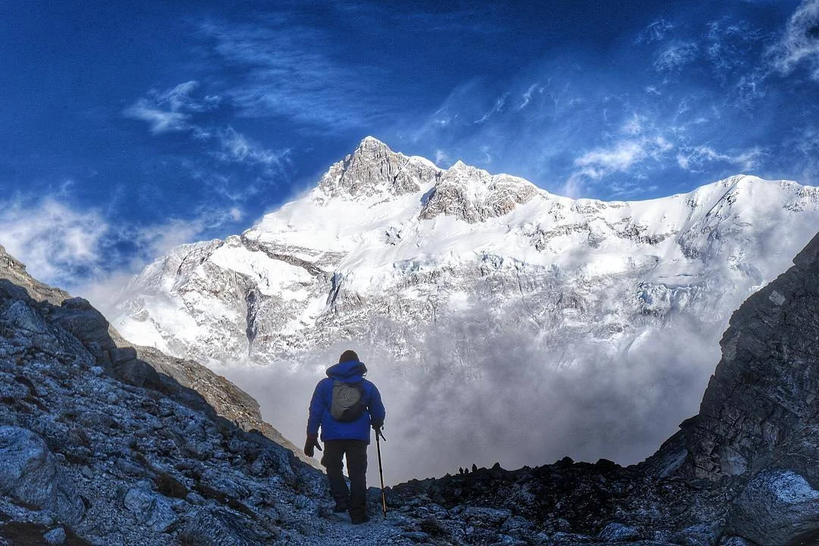
One of the best places to visit in Sikkim is the high mountain pass of Goechala, also known as Goecha La, which rises to a height of approximately 4,940 meters above sea level. With the pass situated near some of the highest mountains in the Himalayas, it’s a great place for any trekker visiting Sikkim. The stunning view of the southeast face of Mount Kanchenjunga is the best feature of this location. For adventure seekers this is the best activities in Sikkim. The back of the Indian 100 Rupee note features an image of the breathtakingly beautiful view from the pass. This location, which serves as the foot of Kanchenjunga’s summit, is breathtaking and definitely worth a visit.
5. Yumthang Valley of Flowers
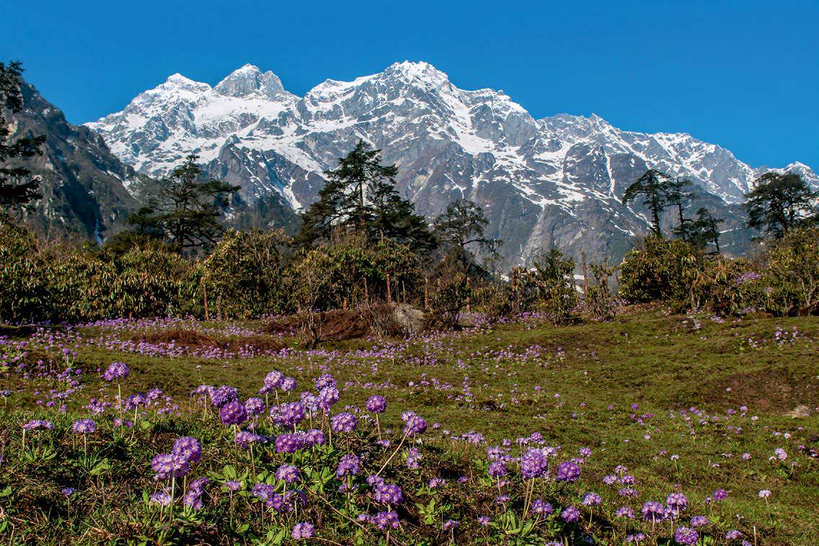
Yumthang Valley is considered one of the best places to visit in Sikkim because of its rolling fields, yaks that graze by the banks of the wild Teesta River, and its numerous hot springs surrounded by rising mountain peaks. About 128 kilometers from Gangtok, at an elevation of more than 11,000 feet above sea level, is covered with flowers. To ensure you don’t miss out on the greatest of Gangtok, you can reserve one of our Gangtok Tours from a vibrant selection of packages we have available.
If you want to know the best time to visit, visit the valley between late February and early March, when the residents celebrate the Losar festival. The Rhododendrons bloom and cover the valley in full glory in April and June.
6. Gurudongmar Lake
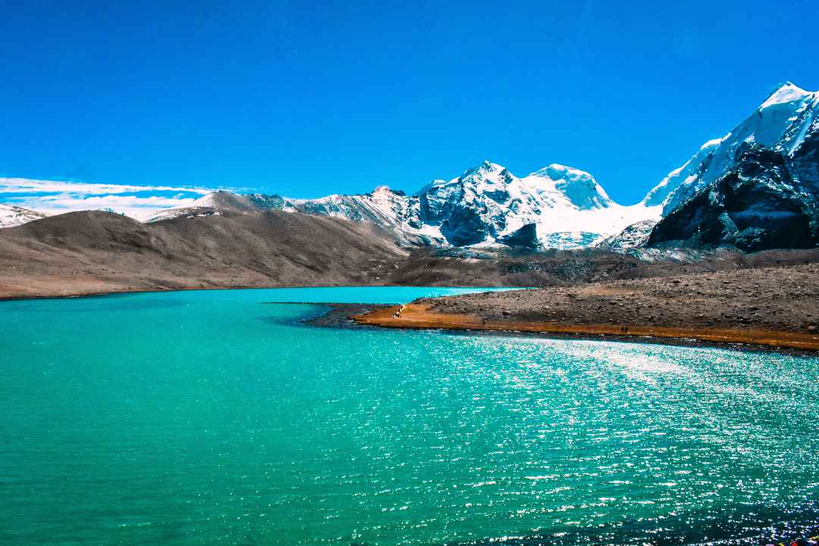
Gurudongmar Lake is a calm and beautiful high-altitude Himalayan lake situated at 17,800 feet. This lake, which is surrounded by snow-capped mountains, is frozen in the winter and reflects the sky and clouds like a mirror in the summer. Situated approximately 174 kilometers from Gangtok, on the northern side of the Kanchenjunga mountain range, this location is highly recommended for visitors to Sikkim. Due to the lake’s proximity to the Chinese-Tibetan border, permits are required for entry.
7.Green Lake
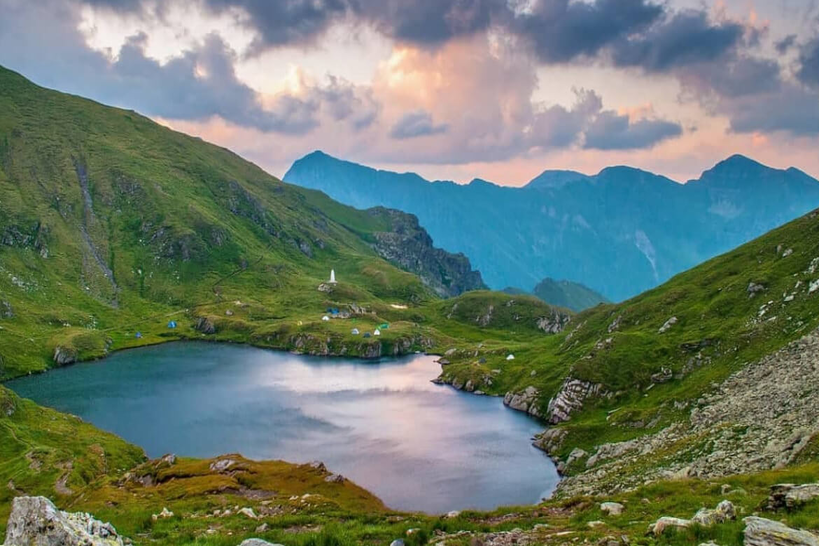
Visiting to Green lake is considered one of the best things to do in Sikkim. Green lake, which is a diamond-green color and surrounded by mountains and glaciers covered in snow. One of Sikkim’s undiscovered and unrestricted destinations is Green Lake. It provides a starting point for people who want to climb Zemu Glacier and Mount Kanchenjunga. The trek to Green Lake begins in Thangu village and travels through the stunning Kanchenjunga National Park. Along the way, you’ll see the confluence of the two major rivers in the area, Zemu Chu and Lachen Chu. You begin your trek from Gangtok by driving via Mangan and Thangu to Lachen. Keep a lookout for wildlife, particularly the infrequently seen Red Panda in the area.
8. Lachung
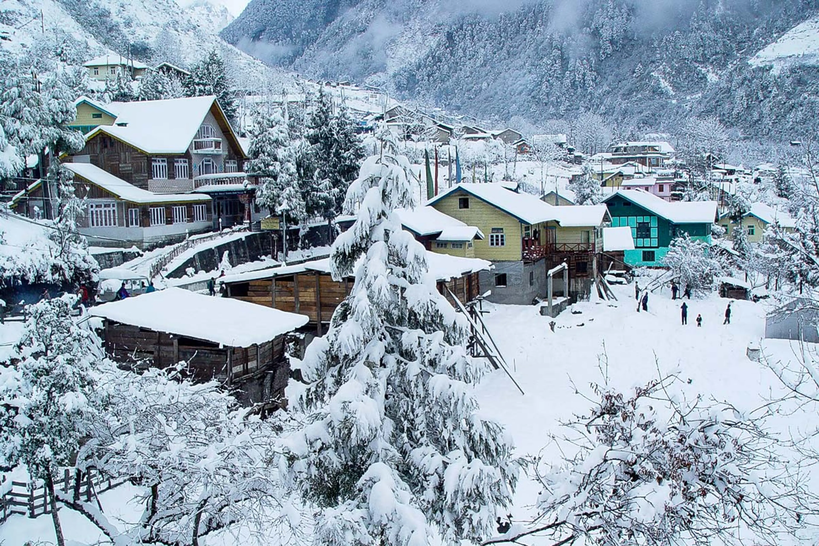
At 9,610 feet in elevation, the little town of Lachung, North Sikkim, twinkles like a morning star. Lachung is located 103 kilometers away from Gangtok. The river Teesta will wind beside you as you travel from Gangtok. A visit to the renowned Zero Point and Lachung Monastery would be incomplete if one were to visit the Lachung hamlet without doing so.
9. Singalila

The trek along Singalila Ridge is easy to moderate and climbs from 2,134 meters to 3,636 meters. Rising to the summit offers breathtaking views of Lhotse Peak, Makalu, Kanchenjunga Peak, and Mount Everest. The journey begins in Darjeeling and travels to Tonglu via Maneybhanjang. From there, it continues to Gairibas and traverses the winding paths of Kalapokhri before reaching the difficult ascent that passes through Sandakphu, the highest peak in the Singalila range, which stands at 3,636 meters. The trek is finished with a descent to Rimbik later on.
10. Ravangla
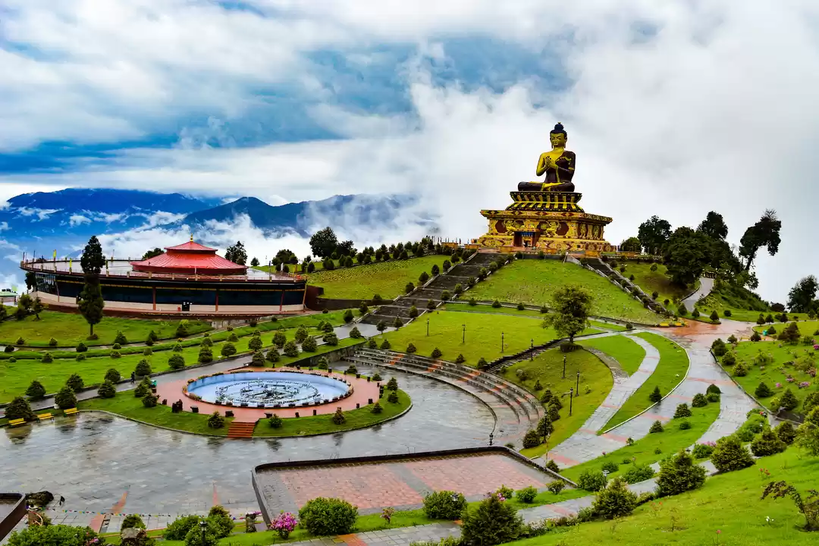
Take a trip to discover a little-known, attractive village in South Sikkim, situated among the rising Eastern Himalayan mountains. At an elevation of about 8000 feet above sea level, the village of Ravangla is surrounded by beautiful scenery that is crafted by Kanchenjunga and its sister peaks, Kabru, Pandim, and Siniolchu. A few nearby attractions that might be of interest to a visitor are the Temi Tea Garden, the Rayong Sunrise Viewpoint, the Relang Hot Spring, and the Ralang Monasteries. Moreover, the curving roads that lead to Ravangla and these locations are incredibly beautiful.
11. Yuksom
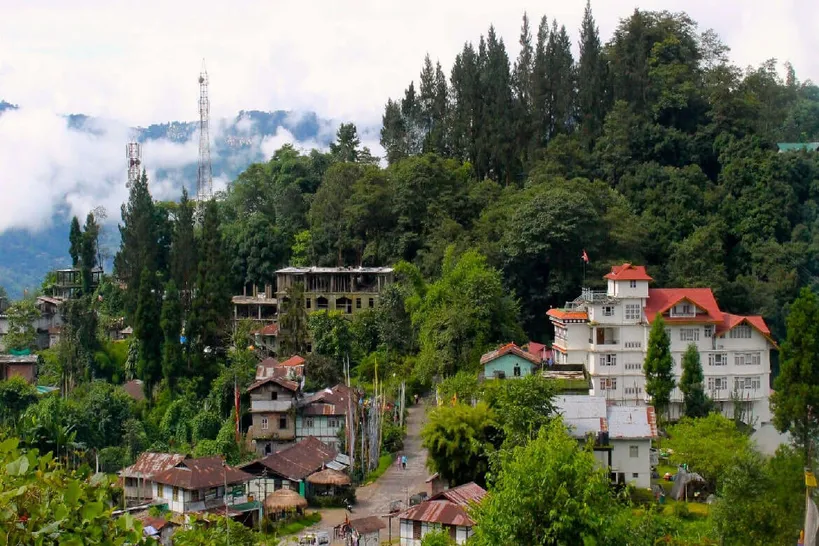
Known as the “getaway to Kanchenjunga,” Yuksom is a small historical town in the West Sikkim district. Those who are interested in visiting historical sites surely this is the best things to do in Sikkim. Among the interesting historical sites in Yuksom are the Tashiding Monastery, Dubdi Monastery, Complex of Tashi Teenka, Kartok Monastery, and Khecheopalri Lake. It is primarily well-known for its monasteries and historical legends about Lamas. Formerly the capital of Sikkim, Yuksom is a beautiful place with a lot of greenery and a rich cultural heritage.
12. Monastery Rumtek
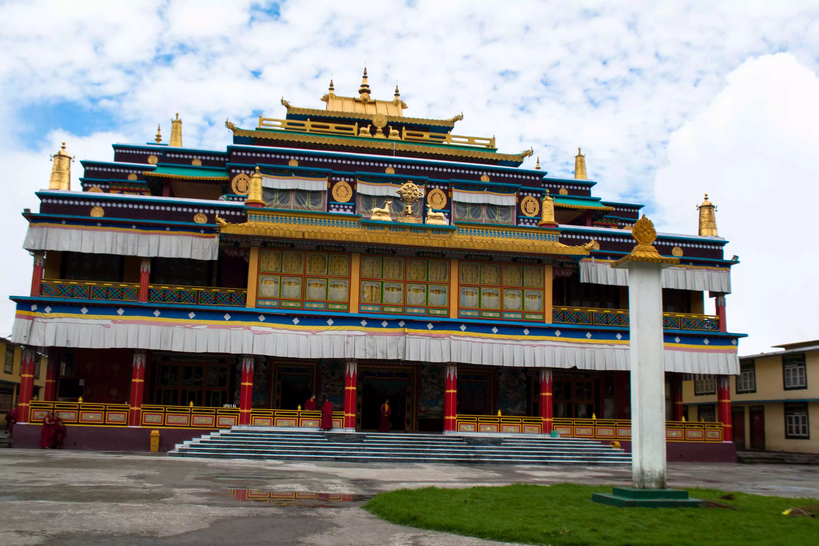
Witness some of the rarest Buddhist artworks and mural paintings in this three-story religious center, a sight to behold. This magnificent monastery is magnificent. Gyalwa Karmapa, the 16th Karmapa of the center, rebuilt the Rumtek Monastery in 1960. The monastery, which is part of the Kagyu group, was initially constructed in the 12th century but was discarded. An amazing collection of hand-painted murals, 1001 small gold artwork, and other artwork, the monastery also offers numerous viewpoints that provide views of Gangtok below. This tourist destination in Sikkim offers an abundance of captivating experiences for its guests.
13. Teesta River

The main river in the state of Sikkim, the Teesta, separates its territory from that of the West Bengal state. Before joining the powerful Brahmaputra, the river travels 309 km over its whole course through the cities of Rangpo, Jalpaiguri, and Kalimpong. In these places, the river is extremely important as the primary source of water. Rafting in Teesta river is one of the best activities in Sikkim. The river, which has several places where you can go rafting in the river, is a terrific source of adventure. It originates from a high-altitude lake in North Sikkim and the Teesta Kangse Glacier, which is 7068 meters high.
14. Thangu
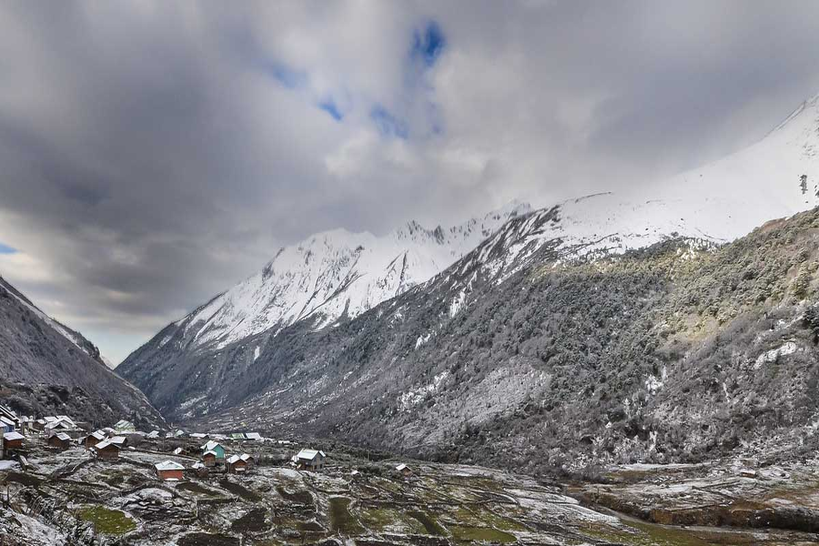
Situated at an amazing elevation of 3,962 meters, the captivating Thangu Valley is blanketed in a thick layer of snow for nearly the whole year. The entire area is blanketed in beautiful mountain flora in May and June. The well-known Chopta Valley and Muguthang trek both start and end in Thangu. With an abundance of mind-blowing views to captivate your senses, the valley is highlighted by the rivers Teesta, Chopta, and Lassur. The quiet village of Thangu is located far from the bustle of towns and cities, surrounded by majestic Himalayan massifs. It takes six or seven hours to drive scenically from Gangtok to the valley.
15. Yume Samdong
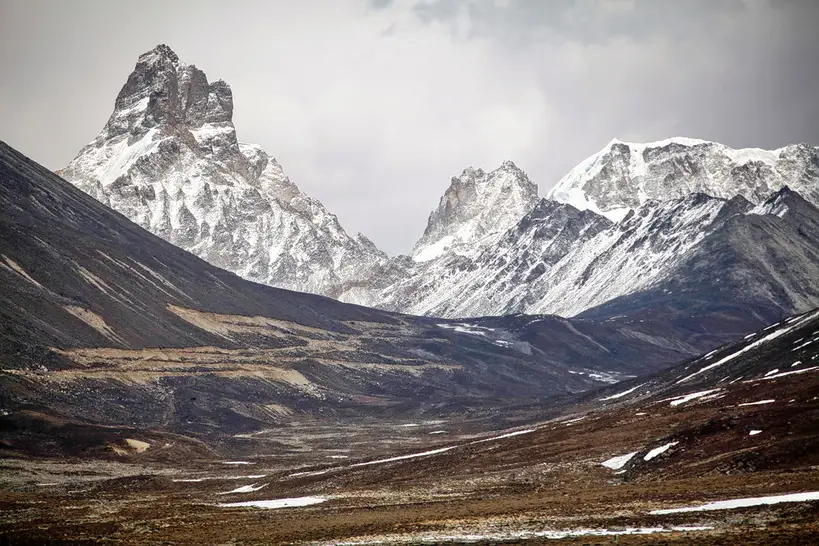
Yumesamdong, also known as Zero Point, is one of the best places to visit in Sikkim and is located 15 kilometers from Yumthang. Located away at an amazing 4,724 meters above sea level, Yumesamdong is also the great frontier of civilization—no road extends farther than this point! The blue skies, which appear to be locked in a never-ending embrace with the mountains, contrast strikingly with the snow-capped bounty that watches over the valley. With its freezing temperatures, strange valleys, and towering massifs, the area is a showcase for Mother Nature at her most magnificent. Another option is to spend a day in Lachung Village, where you can observe the customs and way of life of the locals.
16. Tso Lhamo Lake
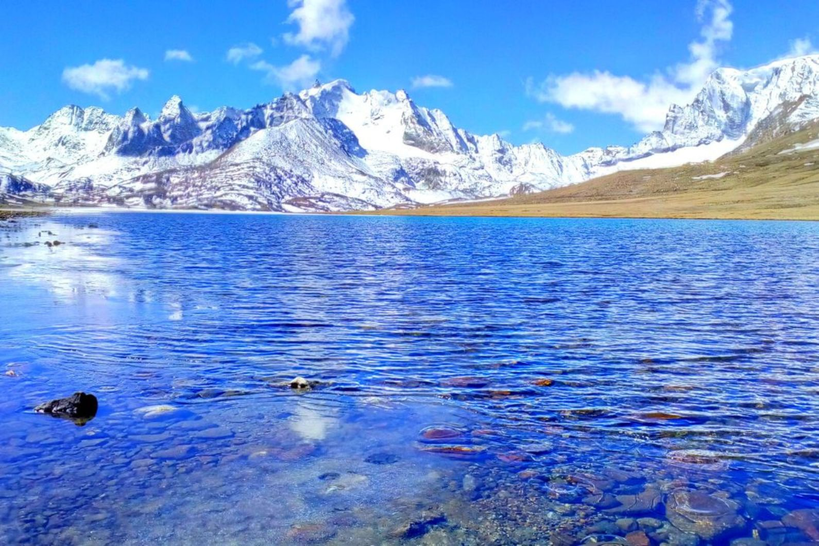
One of the world’s highest lakes, the beautiful Tso Lhamo Lake sits at an amazing 5,330 meters above sea level. Tourists find it challenging to get there due to the severe and cold weather conditions and low temperatures. The lake’s blue waters are surreally reflected by majestic snow-capped mountains that guard it! The Teesta River originates from the lake, which offers unrivaled views of the surrounding natural riches. You will be in awe (a feeling of reverential respect mixed with fear or wonder) of Tso Lhamo’s splendor, I guarantee it.
17. Khangchendzonga National Park

The Kanchenjunga Biosphere Reserve, also known as Khangchendzonga National Park, is dominated by the Western gradients of Mount Kanchenjunga and offers a variety of surprises along its trekking trails. The paths go to Yuksom, Dzongri, Bakim, Tshoka, Goechala, Rathang, and the enormous Zemu Glacier, among other locations. Khangchendzonga National Park is the biggest wildlife reserve in Sikkim, lasting 850 square kilometers. With animals like the red panda, Himalayan black bear, snow leopard, Tibetan antelope, barking deer, musk deer, flying squirrel, and wild ass living among them, this vast green retreat is made even more impressive.
18. Zemu Glacier
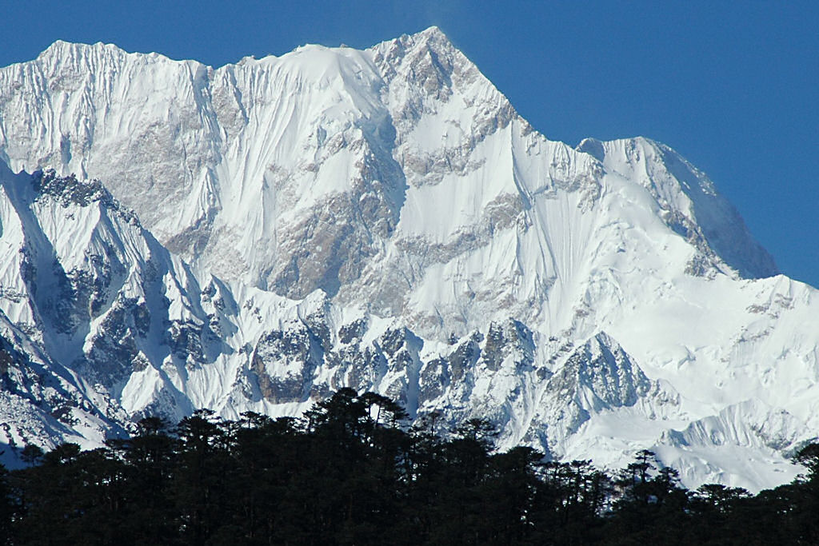
The eastern starting point for climbing Kanchenjunga, the third-highest peak in the world, is Zemu Glacier. This glacier, which stretches 26 kilometers, is an essential source of water for the Teesta River in the Himalayas. You travel by road from Gangtok to Lachen in North Sikkim and then proceed on foot to Jakthang.If you are planing to visit Zemu Glacier, winter is best time to visit.
At an elevation of approximately 16,000 feet above sea level, Green Lake is a significant landmark where most hikers finish and head back. However, continuing forward, passing through Yabuk and Rimbik, will bring you to the snow-covered 18,648-foot-high Zemu Glacier. From here, you can see the splendor of Mount Siniolchu and other Himalayan peaks in all their beauty.
19. Jawaharlal Nehru Botanical Garden
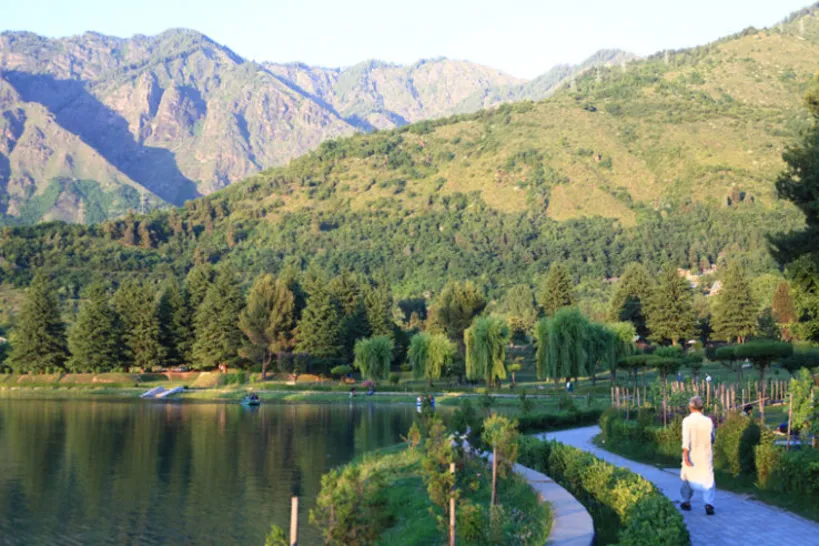
Experience this broad botanical garden sitting on a hilltop and take in the views of the verdant mountain slopes, orchids, roses, and other Himalayan flowers.Taking up much of Yumthang Valley, Jawaharlal Nehru Botanical Garden is situated close to the Rumtek monastery, approximately 22 kilometres from Gangtok. Large children’s play areas, a charming little lake surrounded by a well-kept garden, and a variety of flowers can all be found there.
20. Phodong Monastery
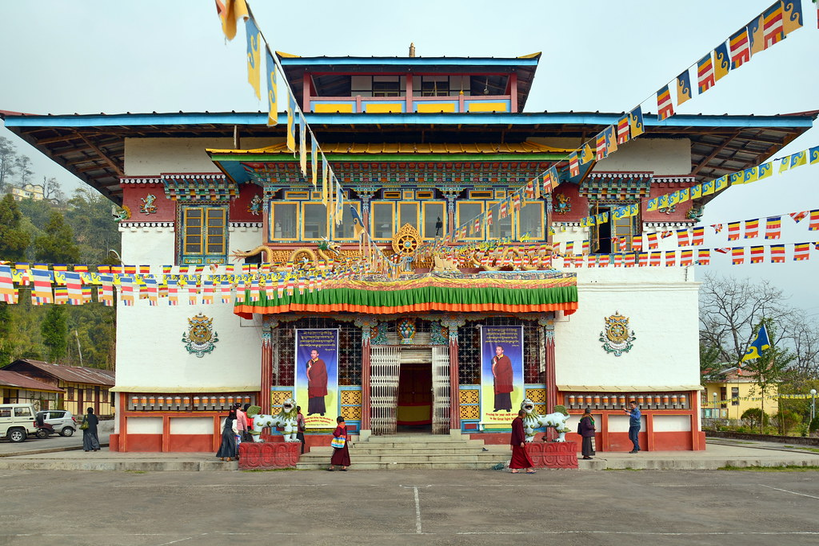
One of Sikkim’s six premier monasteries and one of the three Kagyu group monasteries in the state are located about 28 kilometres from Gangtok. It is believed that Phodong Monastery was built in the early 1700s. A diverse selection of historic paintings and paintings adorn the monastery. Situated 4500 feet above sea level, it provides beautiful scenery and an untouched environment.
Conclusion
In conclusion, Sikkim is an exciting location that skillfully combines natural beauty with a variety of cultures. Sikkim offers a unique experience in every corner, from the active city life of Gangtok to the peaceful environments of Yuksom and Pelling. The wide attractions of the state, which include treks like Dzongri and Goechala, historical sites like Yuksom, and high-altitude lakes like Tsomgo and Gurudongmar, make it an ideal destination for both adventure seekers and nature lovers. It is important that you observe local customs, follow laws, and enjoy Sikkim’s distinct attractions when you visit these locations. Being a state dedicated to protecting its rich history and scenic beauty, it offers visitors more than just a place to visit; it’s a chance to experience the spirit of the Himalayas. Travelers are attracted to Sikkim, which is a true gem in northeastern India, because of its many attractions.
People also ask about the Best Places To Visit in Sikkim
Because of their closeness to international borders, some restricted areas in Sikkim, like Nathula Pass and Gurudongmar Lake, do require permits. Permissions are required from the relevant authorities, so it’s best to confirm the most recent rules before making travel arrangements.
Trekking, river rafting, paragliding, and mountain biking are just a few of the adventure sports available in Sikkim. The Goechala Trek and the Dzongri Trek are well-liked trekking routes that offer breathtaking Himalayan views.
A notable feature of Sikkim’s rich Buddhist culture is the role monasteries play in conserving and advancing this legacy. Not only are monasteries like Rumtek, Enchey, and Pemayangtse spiritual hubs, but they are also architectural wonders that put light on Sikkim’s spiritual customs.
A national park and multiple wildlife sanctuaries can be found in Sikkim. Renowned for its varied flora and fauna, which includes the mysterious snow leopard, Khangchendzonga National Park is recognized as a UNESCO World Heritage Site. Other noteworthy sanctuaries are the Maenam Wildlife Sanctuary and the Fambong Lho Wildlife Sanctuary.
Sikkim holds several cultural festivals to highlight its wide range of customs. Among the significant celebrations are Pang Lhabsol, Saga Dawa, and the Losar Festival (Tibetan New Year). Locals take part in colorful processions, folk dances, and religious ceremonies during these occasions, offering a window into Sikkim’s diverse cultural heritage.
A variety of treks appropriate for various skill levels are available in Sikkim. Experienced hikers can tackle difficult paths like the Goechala Trek, while beginners can choose comparatively simpler treks like the Yuksom-Dzongri Trek. Selecting a trek that is appropriate for your experience and level of fitness is crucial.
Sikkim is rich in Tibetan Buddhist culture and has several monasteries that are worth visiting. Some of the well-known monasteries include Rumtek, Pemayangtse, and Tashiding.
Sikkim has a variety of breathtaking destinations. Some must-see destinations include Gangtok (the capital city), Nathula Pass, Tsomgo Lake, Gurudongmar Lake, Yumthang Valley, Pelling, and Ravangla.
West Bengal’s Bagdogra Airport is the closest airport. From there, you can go to Gangtok by shared taxi or by hiring a taxi. New Jalpaiguri (NJP) is the closest train station, and neighboring cities can also be reached by road to Sikkim.
